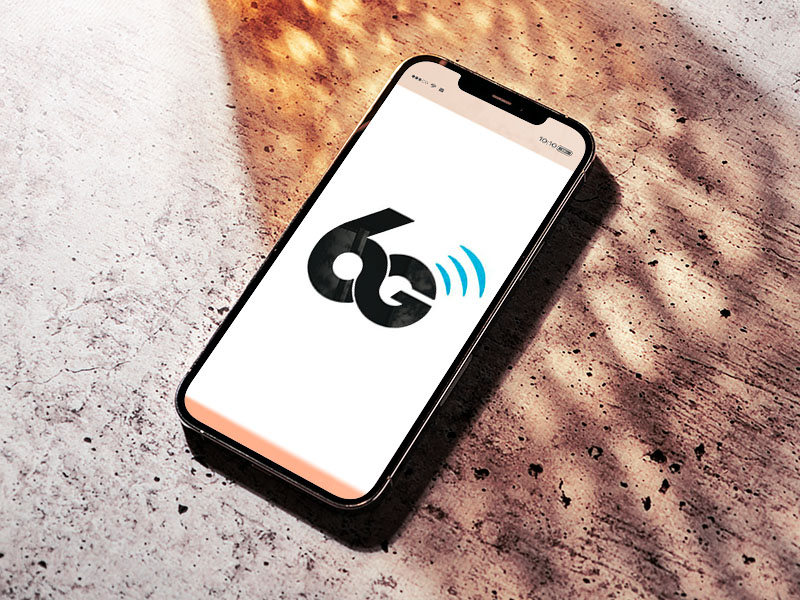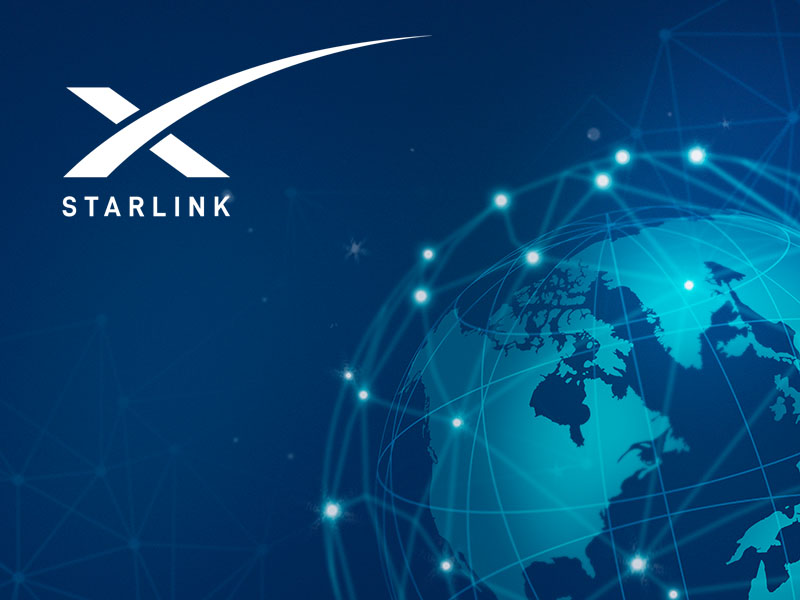The development of 6G advances, and its logo is ready
02/05/2024The development of 6G advances, which already has an identifying logo The telecommunications industry is quickly advancing towards the sixth generation of mobile connectivity, known as 6G, and an excellent example of this is the recent presentation of the new official logo of these next generation of connectivity. The presentation was given by the 3GPP, the organization in charge of developing global standards for mobile technology. The new logo, featuring a modern, cutting-edge design, symbolizes the innovative spirit of 6G and its potential to revolutionize the way we interact with technology. The visual design reflects the unprecedented speed and connectivity expected from this new generation. Which are the new features of 6G? 3GPP is currently working on the technical specifications that will define 6G, and the release of the official logo indicates that the process is progressing as planned. 6G promises incredibly fast data speeds – up to 1Tbps maximum download speed –, extremely low latency and the ability to mix reality with the virtual world, including holographic communications with the help of advanced artificial intelligence. When is 6G expected? Although 6G is still in its early stages of development, the launch of the official logo is a warning that its configuration is advancing, although before this happens, the launch of 5G+ or advanced 5G mobile technology is planned this year. Between 2026 and 2028, the first real tests of 6G standards could be carried out and in 2030, 6G is expected to begin commercialization. The official unveiling of the 6G mobile connectivity logo will take place from May 8 to 10 at an IMT2030 workshop in Rotterdam, the Netherlands.
[ ... ]Roku warns of unauthorized access to hundreds of its customers' accounts
19/03/2024A Roku investigation, the company that manufactures media streaming devices running Roku software to access all kinds of streaming content, has revealed unauthorized access to hundreds of its users' accounts, "likely due to compromised login credentials obtained from third-party sources unrelated to Roku," they said. According to the company itself, these credentials were used to access Roku accounts, where changes were made, including attempts to purchase streaming subscriptions. However, in an official statement, Roku said that any sensitive personal data such as full payment account numbers could not be accessed. The affected accounts were secured and required password resets, as well as the cancellation of unauthorized subscriptions. Roku has announced that it will refund its users for all unauthorized charges. "What can I do if I can't access Roku? Roku has reset all passwords for accounts affected by these unauthorized accesses, so if we are holders of one of them, we may not be able to access it in the usual way. To regain access, we should go to my.roku.com and use the "Forgot your password?" option. Additionally, the company recommends reviewing subscriptions and devices linked to the Roku account from the Roku account Dashboard."
[ ... ]What is Worldcoin and what does scanning the iris involve?
04/03/2024Worldcoin was introduced in summer of 2023 as a revolutionary project with the mission of creating a 100% secure digital identity, essentially a kind of fortified "digital passport," based on the verification of a unique and non-transferable element inherent to each human being—the iris. According to its developers, World ID will help distinguish human online activity from that generated by machines. In the first phase of the project, the creation of this secure digital identity is planned for 2 billion humans. To make this possible, Worldcoin has called on the global population to scan their iris. In return, Worldcoin compensates participants with a few tokens of its successful cryptocurrency, WLD, which has quadrupled in value within a few weeks of its initial launch. The payment in WLD tokens is not coincidental; it is part of Worldcoin's strategy, aiming to leverage the new digital passports to create a comprehensive ecosystem that provides universal and equitable access to advanced financial services for the entire global population. To achieve this, they encourage "iris sellers" to use the Worldcoin cryptocurrency on its fee-free blockchain, unlike Bitcoin, Ethereum, or other cryptocurrencies that do charge transaction fees. How does Worldcoin work? Worldcoin aims to address the issues of bots, rapid creation of fake identities, and content with artificial intelligence. It is designed, according to its developers, to provide every individual in the world with a unique digital identification. Additionally, Worldcoin promises to ensure the financial inclusion of each person in a fair and equitable ecosystem through a universal basic income. Users receive this income in exchange for allowing their iris to be scanned. To create the secure digital passport with Worldcoin, users must undergo an iris scan, which serves as proof of humanity and a unique identity on the blockchain. This process ensures that the individual on the other side of that identity is a human and not a fake profile created with artificial intelligence. In pursuit of the success of their proposal, the company offers users a small amount of their own Worldcoin tokens in exchange for iris scanning. The initial incentive of receiving free cryptocurrency, in the form of a universal basic income, is emphasized by Worldcoin advocates as the basis for the inclusive and universal nature of their initiative. This approach allows anyone to scan their iris, and the WLD tokens received in return can assist people without access to traditional financial services in starting to save and invest. How to Scan the Iris with Worldcoin? The registration process with Worldcoin involves scanning the iris with an orb, the central hardware device of Worldcoin developed by Tools for Humanity. The orb is spherical and processes all the information. Currently, Worldcoin has installed orbs in different countries, including Spain, where users can scan their iris in exchange for Worldcoins. To do this, it is necessary to download the Worldcoin mobile application, World ID, generate a QR code with it, and display it in front of the orb. The orb, upon recognizing it, will scan the user's iris, while a Worldcoin collaborator remotely oversees the operation. The orb takes less than a minute to perform the scan and validate the subject's identity. In exchange for their iris, the user receives a unique number called "IrisHash" and a cryptographic wallet with Worldcoins. "This digital passport is accepted as proof of unique humanity, which people can use in the digital world without the need to share any other data," assure its developers. What happens with my scanned iris in exchange for Worldcoins? Once the iris scan is completed, and digital identity is granted to the user, Worldcoin assures that the orb quickly eliminates the images unless the user requests their preservation. Only the set of numbers called "IrisHash" is stored for identification, without any additional biometric data. Worldcoin also commits to ensuring that users share only the necessary information they wish to share, providing verification options through linked devices or the additional facial authentication orb for high-security cases. Despite these commitments, the collection of biometric data through iris scanning for the unique proof of humanity continues to raise significant questions regarding privacy and information security. Some countries such as Brazil, France, India, or Kenya have halted Worldcoin's iris scanning. How much do you get paid for scanning your iris? Worldcoin pays 25 WLD for scanning your iris, which, according to the cryptocurrency's exchange rate in February 2024, has translated to an average of between 50 and almost €160 for iris sellers, depending on the value of Worldcoin on the day they scanned their iris. At the beginning of February, the value of each WLD unit was around two euros, and by the end of the month, it had risen to nearly seven euros. What can I spend my WLD on? 'Iris sellers' have the freedom to use their Worldcoins from the moment they receive them. They can exchange the payment for other cryptocurrencies, withdraw them in euros from a specialized ATM, or hold onto the tokens in the hope of an increase in their value. Additionally, WLD payments are already accepted on platforms such as Discord, Shopify, Minecraft, Telegram, Mercado Libre, or Reddit, among other places. Who is behind Worldcoin? Worldcoin bears the stamp of two innovative minds: Sam Altman and Alex Blania. Altman is the CEO of OpenAI and a key figure in artificial intelligence development, leading projects like ChatGPT. Blania, on the other hand, is the co-founder of Tools For Humanity, contributing his experience in creating technological tools for a more equitable economic system to this new and successful cryptocurrency.
[ ... ]New Microsoft update to solve VPN connectivity failures in Windows
24/01/2022Update for Windows is now available – KB5009543 for Windows 10 and KB5009566 for Windows 11 – and fixes connectivity issues experienced by some Virtual Private Network (VPN) tools after installing the latest patch. The update, explains Microsoft, eliminates these errors in their own VPN tool and in the ones of several external companies. The update also includes solutions for other failures related to the restart of Windows Server domain controllers and also, solutions for the bootable problems on virtual machines and with ReFS-formatted removable media. The new update is a 'Out-of-band' (OOB) type because it's not included in the usual Microsoft release schedule.
[ ... ]Starlink will finish its satellite Internet tests in October
21/09/2021Starlink's beta program, the high-speed Internet service for rural areas without broadband connection, will end its trial period next October. After a year of testing this system, more than 1.800 satellites in orbit and a stable coverage in the United States, Canada, United Kingdom and Spain, Space X is waiting for the approval of the rest of the countries where the company has already registered its trademark to operate - Austria, Australia, Argentina, Brazil, France, Chile, Colombia, Germany, Greece, Ireland, Italy, Mexico, the Netherlands, New Zealand, the Philippines and South Africa – being their goal to offer global satellite internet service in a short time. To take advantage of Starlink in areas without terrestrial Internet coverage you will need a special installation kit, which includes a terminal station, a WiFi 'router' and an antenna to connect to the satellite network.
[ ... ]






